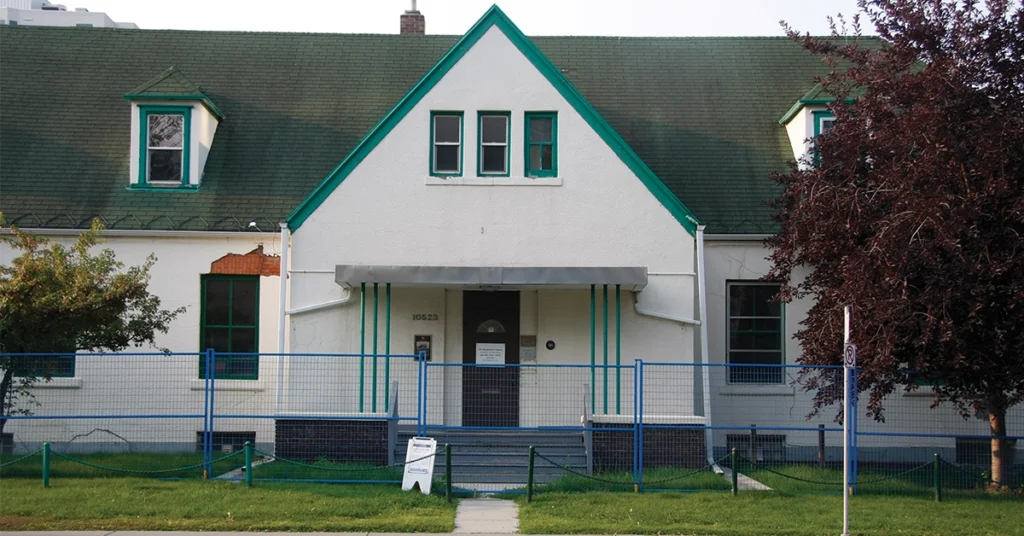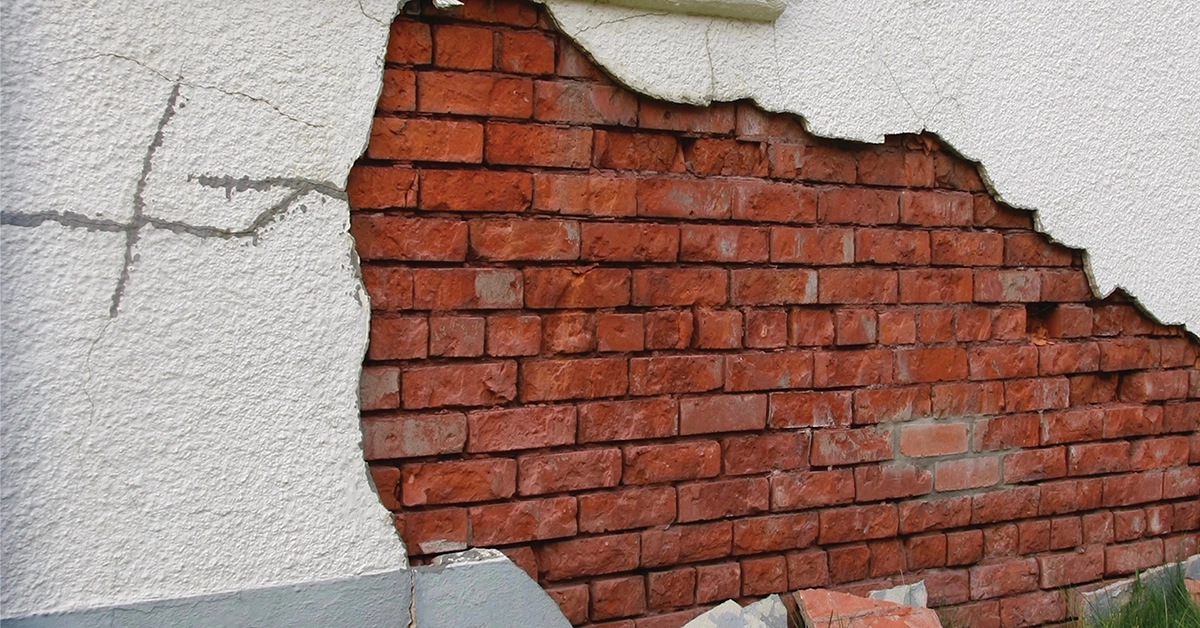If you’re walking through downtown and central Edmonton and it feels like you can’t throw a stone without hitting an old building, you’d be right. The city is home to over 1,000 historic resources, which include everything from the buildings at Fort Edmonton Park, to trees, cemeteries, and residential homes.
Some historical locations give off a sense of importance right away. Stately churches, schools, and armouries with specific architecture and material types tell you about when the structure was built, what purpose it served, and why it’s still around. Other resources need to share a bit more context in order to give the full story of their conservation.
100 Avenue in downtown Edmonton was once home to some of the city’s earliest settlers. The city was originally founded in 1795 as a Hudson’s Bay trading post because of its close proximity to the North Saskatchewan. In 1876, Treaty 6 was signed between Queen Victoria and regional First Nations, including the Plains and Woods Cree and the Assiniboine, as well as others. In 1892, Edmonton was incorporated into a town, and a year later in 1893, the Crown Land, Timber and Registry office was constructed on 100 Avenue. That single year would prove to be an interesting one.
In the late 1800s, as the Canadian Pacific Railway made its way from coast to coast, the Calgary and Edmonton Railway (C&E) was built in 1891 as a link between the two municipalities. The rail line ended in the town of Strathcona, and did not cross the river to the Edmonton settlement. The railway encouraged many settlers to head farther north from Calgary, and many community leaders expected Strathcona to become a bustling metropolis. With those expectations, talks began to arise of moving the original Land Registration Office, which had been located in Edmonton since 1884, to Strathcona. Edmontonians did not like this idea.
According to the Alberta Register of Historic Places, managed by the Heritage Resources Management Information System (HeRMIS) and Alberta Culture and Tourism, Edmonton residents, including Edmonton’s first mayor, Matt McCauley, took matters into their own hands to ensure settlers would continue to make the ferry trip across the river to stake their land claims.

“One dark night in June 1892, the land office was being loaded onto wagons for a furtive trip across the river. It seems boosters of that impetuous overnight clapboard sensation — otherwise known as Strathcona — had convinced Interior Minister Edgar Dewdney or ‘Dirty Dewdney’ as The (Edmonton) Bulletin called him, that the office would be better located close to the end of the recently-completed Calgary and Edmonton Railway,” reads documents on the HeRMIS website.
One account said that Reverend Fauquier, a Roman Catholic priest, alerted the citizens of the move. The Bulletin wrote in a separate account that the land office employees bought a classified ad that night, notifying the public of the new location across the river.
“Mayor Matt McCauley, who had already garnered a reputation for expedition, led a troop of indignant residents to the offending wagons, quickly removed the ‘whiffletrees’ and the nuts on the axles, and placed a guard around the wagons,” the documents continue. By removing the whiffletrees and nuts, the wagons became completely immobile, placing McCauley and his accomplices at a great advantage over the office employees.
The Northwest Mounted Police led mounties from Fort Saskatchewan to supervise and support the land office’s move. On the way, however, they were met by McCauley and the concerned citizens.
“McCauley told (NWMP Captain Arthur) Griesbach that the ‘building will not be moved without bloodshed. I am prepared to take chances, if you care to do the same.’ Griesbach backed off and four days later, the land office was back in business in its old location,” the HeRMIS website continues.
The Edmonton Bulletin wrote later that, “(T)he excitement had barely time to subside, when on July 11, 1892, tenders were called for a new land office to be built in Edmonton.” That building was constructed on 100 Avenue, and was known as the Land Titles Building.
The Land Titles Building was designated in 1977 as a Municipal Historic Resource, which means it is protected and preserved by the City of Edmonton to showcase the development and history of the city’s development. Built 84 years before its designation, the Land Titles Building is the oldest Federal administration building in Alberta.
At first glance when walking down the street, the building doesn’t look like much. It has white stucco siding on the exterior walls, cracked and falling off in places, exposing the original red brick underneath. The green roof is hipped with small dormer windows, and a few stairs lead up to its double door entrance. If you don’t notice the Heritage Resource Designation on the front of the building, you probably wouldn’t have any guess as to how old it was, or why it’s still here on 100th, surrounded by apartment and office buildings. The building is also now surrounded by a blue construction fence, and its previous tenants, the Elizabeth Fry Society of Edmonton, moved to a different office space in April after 23 years in the space. People have wondered online about the future of this innocuous white building.

According to the City of Edmonton’s website, the building is slated to undergo renovations in the near future. In addition to its past as a federal land titles office, the building was home to the Victoria Armouries during the First World War, and in recent history has been used as offices for various health and social organizations. The current building plans include an extension with barrier-free accessible washrooms on the main and second floor. Additionally, the exterior stucco will be removed to showcase the original brick construction, giving a much needed facelift to a building that has served its community in many ways over the last 125 years. New walkways will also be constructed on the north and south sides of the building.
Heritage advocates say that more needs to be done to preserve resources in Edmonton. Dan Rose of the Edmonton Heritage Council says that there’s a different level of historic appreciation here on the prairies than back east.
“We don’t have a strong appreciation or recognition of our built heritage and the value it adds to our communities, economy and environment, and civic identity,” he says. “We’re relatively new here … the oldest buildings in Edmonton date from like the late 1880s. In places like Ontario and Quebec where buildings date from the 1780s … and they are in great abundance, there is a much stronger respect and appreciation for heritage. Conservation almost seems like a no-brainer there, whereas our first reflex to tear down and build something shiny and new and modern.”
Beyond the hurdle of getting people to care about historical resources, even the ones that look unremarkable to some, is the costs associated with upkeep and updating.
“Rehabilitation and adaptive re-use require far more creativity than a new build so design, engineering, and construction costs tend to be higher. Restoration and conservation work is also quite specialized and often small local teams, which means the cost of labour and materials is also higher. There are limited qualified specialists and access to material is tricky sometimes,” said Rose.
While Edmonton doesn’t have the extent of history that cities like Toronto and Montreal do, there are a lot of interesting tidbits and legends right under our noses here. Keeping heritage sites and buildings in good condition and as accessible amenities in our communities helps place them into context and makes use of something still useful, rather than starting new with something shiny.
Groups like the Edmonton Heritage Council, Fort Edmonton Park, and the Edmonton Historical Board, along with dozens of other organizations, do work every day to preserve the history in our city, and it’s easy to get involved with them. Certainly easier than immobilizing a group of wagons and federal employees, but everyone starts somewhere on their journey to preservation of the past.
Photography by Derrick Ferry and supplied.





0 Comments